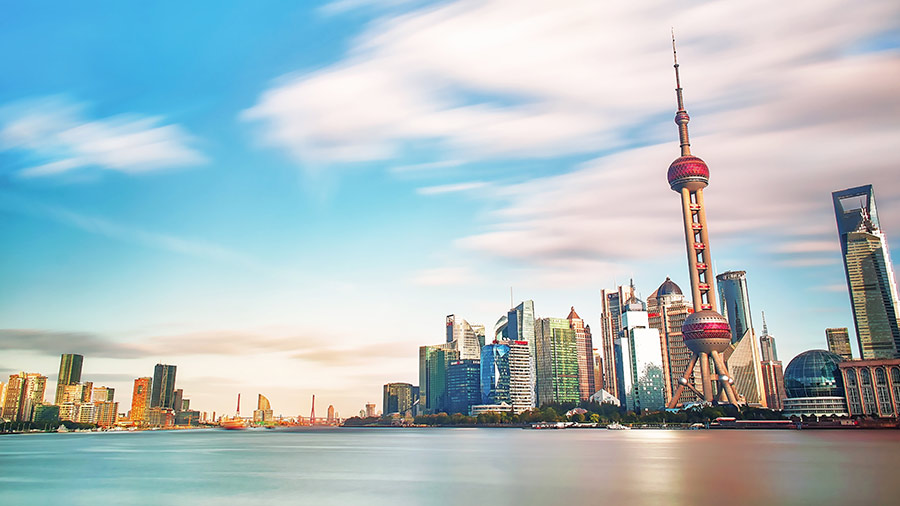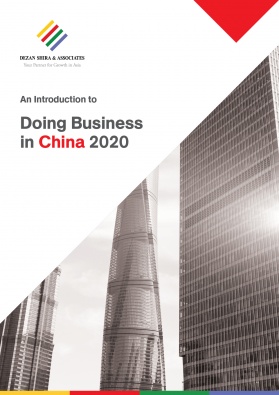Why the Shanghai FTZ Will be Key to the City’s Post-COVID Recovery
The Shanghai government has released ambitious plans to revitalize its economy as China recovers from the coronavirus (COVID-19).
Shanghai, mainland China’s financial and commercial capital, shut down significant parts of its economy earlier this year as part of efforts to combat the epidemic outbreak. As a result, the city’s first quarter GDP fell by 6.7 percent, compared to the previous year.
Now, as life in Shanghai has largely returned to normalcy, the municipal government is fast-tracking economic policies to stimulate the city’s economic rebound. These include plans to expand the city’s financial center, deepen reform in the free trade zone (FTZ), and invest in new infrastructure.
Together, these policies will see Shanghai’s expand on its strengths in finance, trade, and high-tech, reasserting its position at the forefront of economic reform in China.
Expansion of Shanghai’s financial center
Shanghai municipal authorities are planning to transform the city’s North Bund area in Hongkou district into an extension of the city’s financial and commercial center.
The North Bund sits across the river from Lujiazui – the waterfront commercial area home to the city’s iconic skyline and the headquarters for many financial institutions and countless other businesses.
Government officials hope to transform the North Bund’s 3.3 square kilometer riverside into 8.4 million square meters of developments, including building a new 480-meter tall skyscraper. In comparison, the Shanghai Tower – the world’s second tallest building – stands at 632 meters on the other side of the Huangpu River.
Once carried out, the redevelopment of the North Bund will be a significant facelift of Shanghai’s downtown core. The North Bund is by no means an undeveloped area – featuring landmarks like the Hyatt on the Bund – but it could emerge as another key commercial center in the city, along with Lujiazui and other areas, such as People’s Square and Jing’an.
To populate the planned office space and new facilities, the Hongkou district government seeks to attract 100 high-profile foreign and domestic companies to set up regional headquarters there, particularly in the finance, shipping, and 5G tech sectors.
The government will unveil an incentive package in the near future to attract these investments.
Upgrading the Shanghai FTZ
In April, the Shanghai Municipal Commission of Commerce, Development, and Reform Commission and the Commission of Economy and Information Technology jointly released the Implementation Opinions on Promoting Innovation and Upgrading of the City’s National Economic and Technological Development Zone to Create New Heights for Reform and Opening-up (the “Opinions”).
The Opinions put out 19 policies under five broad categories for various government agencies to implement upgrades to the Shanghai FTZ. These range from accelerating financial reform to streamlining bureaucracy and cutting energy costs.
The first category of the Opinions calls for further opening-up of the Shanghai FTZ’s economy to foreign trade and investment. Specifically, it calls for:
- relevant government agencies to expand the scope of the development zone;
- promote financial reform, innovation, and other economic development policies;
- encourage multinational companies to set up regional headquarters and research and development centers;
- support financing to promote foreign investment; and
- improve the quality and ease of foreign trade.
Secondly, the Opinions direct relevant government agencies to be given more autonomy in managing reforms. This includes:
- making sure responsibilities are clearly separated between agencies;
- promoting the delegation and decentralization of administrative processes; and
- allowing flexibility in offering investment incentives.
Thirdly, the Opinions aim to strengthen the development of strategic industries. Among the industries highlighted for development are:
- high tech innovation;
- advanced manufacturing;
- tech-enabled services;
- green development;
- and the construction of a leading science and technology center.
Fourthly, the Opinions encourage the effective delivery of government services, namely through efficient land use policies, reducing energy costs, and offering special services for high-end foreign talent.
Finally, the last area of the Opinions encourages cooperation between the Shanghai FTZ and international partners as well as coordination with other development initiatives in the Yangtze River Delta economic region.
Relatedly, the Shanghai government released plans on May 8 in support of the Lingang New Area – a vast expansion of the FTZ that was approved in August 2019.
To accelerate development of the Lingang New Area, the government is now offering a number of incentives to attract investment, including subsidies for well-known companies, rent deductions, and supportive measures for international talent.
Investment in new infrastructure
The Shanghai municipal government recently released the “Shanghai Action Plan for Promoting New Infrastructure Construction (2020-2022)” (the “Plan”), which outlines the city’s near-term plans to invest in so-called “new infrastructure”.
New infrastructure is an area that is poised to take center stage in the central government’s economic stimulus plans to revitalize the country’s post-coronavirus economy. As opposed to traditional infrastructure like roads and bridges, new infrastructure refers to infrastructure needed for new technologies, such as 5G systems, new energy vehicle (NEV) charging stations, and green energy.
The Plan puts forward 35 measures to construct world-class new infrastructure in Shanghai over the next three years, classified under four major goals:
- The first goal is to build “new network” facilities, which essentially refers to 5G and related infrastructure.
- The second goal is to establish “new facilities” – innovation centers to research areas like semiconductors, artificial intelligence, and biomedicine.
- The third goal in the Plan is to create a “new platform”, which is a big data platform that the government will leverage for governance, healthcare, and innovation.
- Lastly, the fourth goal is to create a “new terminal”. This is a broad category that includes hard infrastructure, such as in transportation, logistics, NEV charging stations, smart roads, and many other areas.
More details on China’s investments in new infrastructure will likely be announced as the country’s top leaders gather for the Two Sessions meetings, where the government’s agenda for the rest of the year will be announced.
Explore Our Related China Business Insights
About Us
China Briefing is written and produced by Dezan Shira & Associates. The practice assists foreign investors into China and has done so since 1992 through offices in Beijing, Tianjin, Dalian, Qingdao, Shanghai, Hangzhou, Ningbo, Suzhou, Guangzhou, Dongguan, Zhongshan, Shenzhen, and Hong Kong.
Please contact the firm for assistance in China at china@dezshira.com.
We also maintain offices assisting foreign investors in Vietnam, Indonesia, Singapore, The Philippines, Malaysia, Thailand, United States, and Italy, in addition to our practices in India and Russia and our trade research facilities along the Belt & Road Initiative.
- Previous Article How to Determine Your Foreign Employees’ IIT Liability in China: COVID-19 Travel Ban Series
- Next Article ¿Por qué los estímulos económicos en China por el Covid serán distintos a los del pasado?









